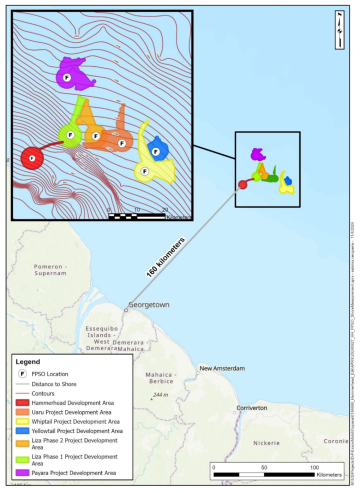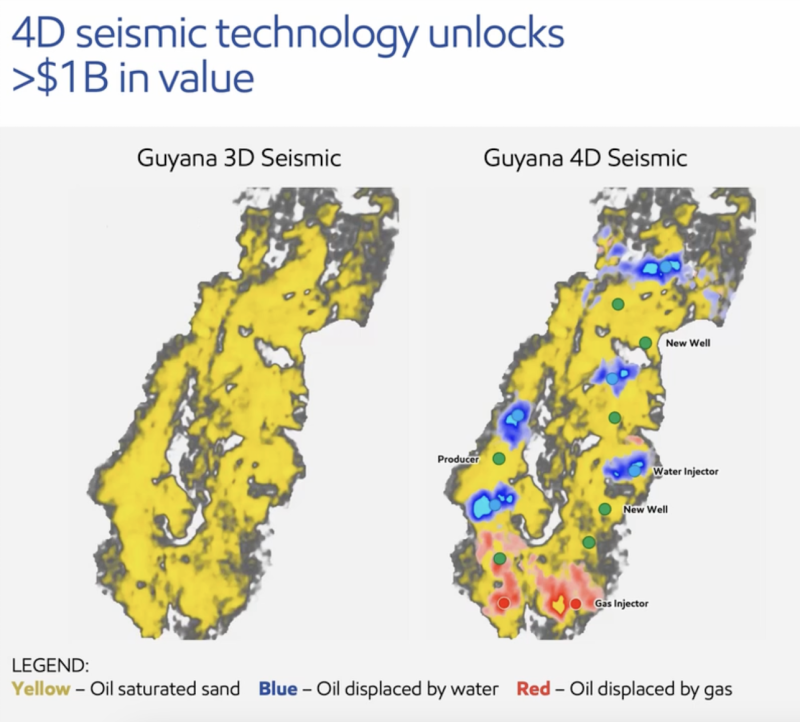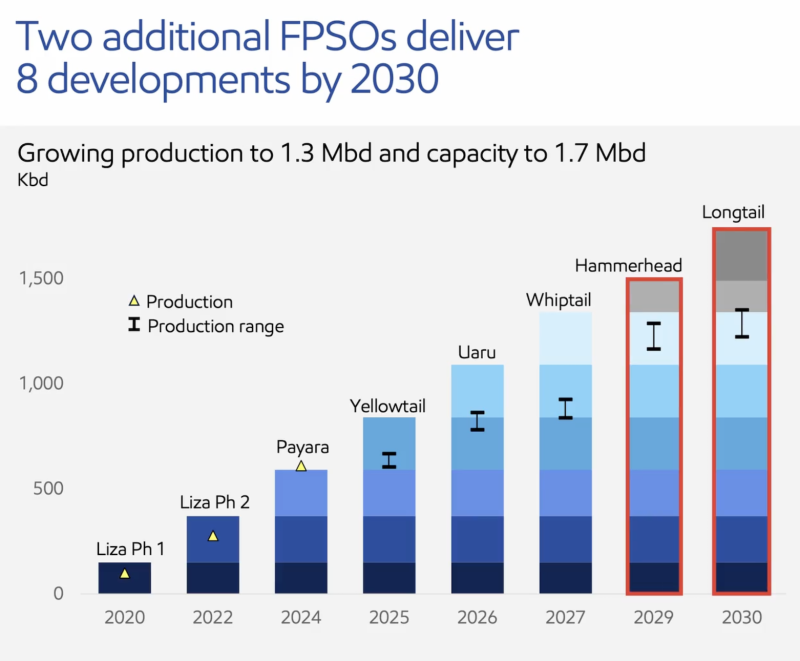ExxonMobil has awarded MODEC a limited notice to proceed for a floating production, storage, and offloading (FPSO) vessel intended for the operator’s seventh project offshore Guyana.
The notice, which is subject to government and regulatory approval of the Hammerhead heavy-oil project in the Stabroek Block, covers the FPSO’s front-end engineering and design (FEED) in the first phase and engineering, procurement, construction, and installation (EPCI) in the second phase, MODEC announced 21 April.
Under the notice, MODEC can begin activities related to the FPSO design to ensure the earliest possible project startup, should the project receive the necessary government approvals. The second phase of the notice is subject not only to government and regulatory approval but also to ExxonMobil and its block partners reaching final investment decision (FID) on the project.
ExxonMobil has indicated it expects FID on Hammerhead this year and first oil in 2029.
The Hammerhead field is in 750 to 1250 m of water, and the FPSO would be moored in about 1025 m water depth using a SOFEC spread mooring system. The FPSO is expected to have capacity to produce 150,000 BOPD as well as associated gas and water, and store 1.6 million bbl of oil. It will have capacity to reinject 340,000 BWPD of produced water.
MODEC is currently fabricating the Errea Wittu FPSO (Errea Wittu means abundance) for ExxonMobil’s Uaru project, which is expected to begin production in 2026. The notice for the Hammerhead FPSO represents MODEC’s second for use by ExxonMobil and its partners offshore Guyana. The Hammerhead FPSO will use a converted hull.
Environmental Assessment
In the second quarter of 2024, ExxonMobil submitted its application to the Guyanese Environmental Protection Agency (EPA) for the Hammerhead development project. In February 2025, Environmental Resources Management Inc. (ERM), released the environmental impact assessment (EIA) for the Hammerhead field.
According to the EIA, the development plan calls for drilling 14 to 30 production and water-injection wells; installing and operating subsea umbilical, riser, and flowline (SURF) equipment that will connect the FPSO to the wells; using an FPSO to process, store, and offload the recovered oil; and installing a 13-km gas export pipeline from the FPSO to a tie-in on the Gas to Energy pipeline. The EIA said subsea components are expected to be installed in 2028, with FPSO installation and commissioning expected the same year.

Environmental Resources Management stated in the EIA it had determined planned project activities are predicted to have negligible to minor residual impacts on physical resources, no impacts on coastal biological resources, negligible to moderate as well as some positive residual impacts on marine biological resources, and negligible to minor residual impacts on socioeconomic resources with largely positive impacts on socioeconomic conditions and employment.
The firm further recommended some controls, mitigation measures, and plans be required as conditions of project approval by the Guyanese EPA. An example of a recommended control was the use of a blowout preventer system that can close rapidly, and that the equipment be tested at installation, following disconnection or maintenance of a pressure containment seal, and at least every 21 days.
Hammerhead Plans
Neil A. Chapman, ExxonMobil senior vice president, said during a March 2025 investor event that the company is using advanced technologies to improve resource recovery. One of those is 4D seismic, which he said provides an accelerated understanding of the flow of oil through the reservoir to enable better placement of injection and production wells.
“You’re trying to push with gas and water the oil towards the producing wells. Better visualization of that gives you better placement. Better placement gives you a better recovery. We estimate this technology is going to add $1 billion net to our first six (FPSO) boats” placed offshore Guyana, he said.

Chapman said even more opportunity will arise with additional high-performance computing power, in which the supermajor is investing. An expansion in computing power expected online next year will have the potential to reduce the timeline from data acquisition to action from 2 years to 3 months, he said.
“If you can get that kind of timeline, you get much better recovery out of the reservoir,” he said.
He noted that Hammerhead’s oil, at 15–24 °API, is much heavier than that of the Liza development, at around 32 °API, or the planned Longtail development, which has about 40 °API oil.
The ERM’s EIA said drilling for Hammerhead is expected to occur from 2026 through 2031, and Chapman said drilling speeds are increasing. This is particularly important, he said, because drilling eats up about a third of project costs, with the remaining thirds going to the FPSO and SURF.
“Drilling is really, really critical,” he said. “Every year, we’re drilling at a faster pace. We’re now drilling at twice the speed in Guyana, in deepwater, than we were in 2019.”
Further, he noted, every well drilled in the basin provides new learnings.
ExxonMobil is still in the very early stages of developing its Stabroek Block—the first discovery was in 2015, and the first FPSO began production in December 2019. In the first 5 years of production offshore Guyana, ExxonMobil and its partners have raised production from the block to over 600,000 B/D.

“Remember, we’re doing something unique here. We’re exploring, appraising, and developing, all in parallel, in this basin,” he said.
The immediate expectation is for eight FPSOs deployed across “hundreds of square miles” offshore Guyana. The fourth FPSO—ONE Guyana—recently arrived on the block, which holds an estimated 11 billion bbl of recoverable oil. Hammerhead, which was the ninth find offshore Guyana by ExxonMobil and its partners in the Stabroek Block, is expected to be the seventh project to begin production and be followed by Longtail going online in 2030.
“Three boats online, five to come. These eight boats are going to be deployed across hundreds of square miles. What that means is when you’ve got eight foundational boats, you’ve got lots of opportunities for tiebacks. You’ve got lots of opportunities for infill drilling. Those are the highest-return investments you’ll ever make in the upstream because you’ve got most of the capital already deployed.”
He said ExxonMobil and its partners aren’t “even close to” to focusing on tiebacks and infill drilling. “There’s lots of running room,” Chapman said.
ExxonMobil operates the Stabroek Block with 45% interest on behalf of partners Hess Corp. with 30% interest and CNOOC Petroleum with the remaining 25% interest.


